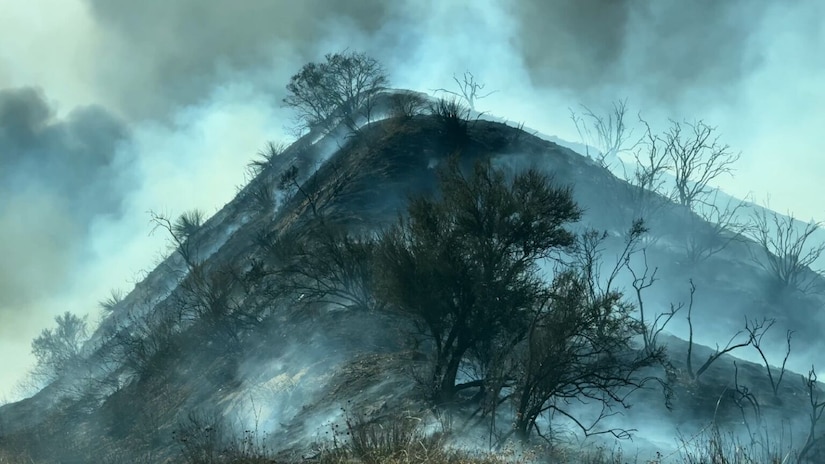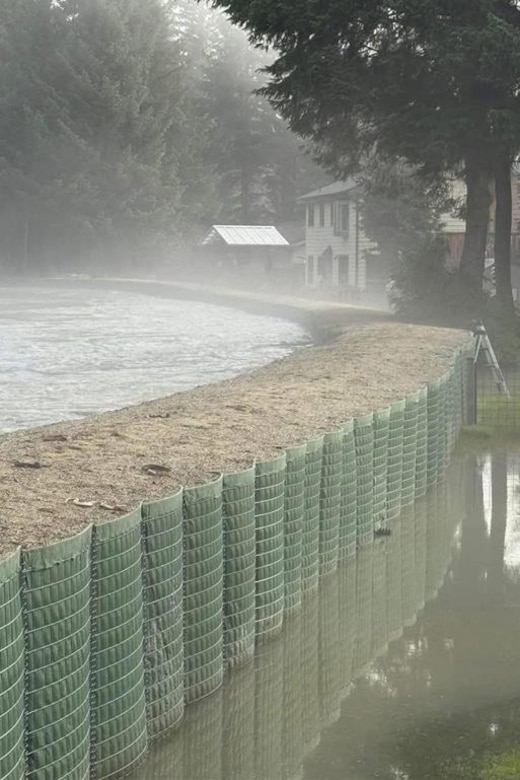This essay explores the phenomenon of multigenerational trekking. It examines why seniors and youth are embracing hiking in greater numbers, the shared and unique barriers they face, the health and well-being benefits supported by evidence, and the implications for public lands, safety, stewardship, and industry. It concludes with practical guidance and policy recommendations, showing how the hiking boom can be sustained as a healthy, inclusive movement.
Hiking’s New Growth Engines: Data Overview
Hiking participation in the United States has surged over the past decade, becoming one of the most accessible and fastest-growing outdoor activities. According to the Outdoor Industry Association (OIA), hiking remains a “gateway” activity, drawing newcomers who later expand into camping, climbing, or water sports. Recent participation reports indicate record numbers of hikers in 2023 and 2024, with growth disproportionately concentrated among seniors (65+) and youth (Outdoor Industry Association, 2024).
The Outdoor Foundation’s executive summaries confirm that both ends of the age spectrum are fueling the expansion of outdoor recreation. Youth (ages 6–17) are experiencing notable increases in participation rates, while seniors are finding trails to be both accessible and socially engaging. In parallel, the National Park Service (NPS) recorded record-breaking visitation in 2024, with more than 325 million recreation visits across its sites (National Park Service, 2025).
The convergence of more seniors and youth on trails highlights the multigenerational character of the current boom. It also raises practical challenges for safety, infrastructure, and stewardship.
Seniors on the Move: Motivations and Momentum
For older adults, hiking represents an accessible, low-impact activity with measurable health benefits. The Centers for Disease Control and Prevention (CDC, 2024a) recommends at least 150 minutes of moderate-intensity aerobic activity per week for adults over 65, coupled with balance and strength training. Hiking delivers on all three counts: cardiovascular exertion, strength from inclines, and balance training over varied terrain.
Medical studies further show that additional daily steps in older adults are linked to reduced cardiovascular disease risk (American Heart Association, 2023). Hiking provides structured, enjoyable ways to meet these targets, offering benefits for blood pressure regulation, sleep improvement, anxiety reduction, and cognitive health.
Seniors are also motivated by social and emotional drivers. Many retired adults report seeking purpose, connection, and active engagement with family or community. Hiking clubs and ranger-led walks often feature high proportions of retirees, blending exercise with companionship. Post-pandemic, these motivations intensified, as outdoor activity became a safer means of staying connected.
Technological and infrastructure improvements have made trails more accessible. Lightweight trekking poles, cushioned trail shoes, better signage, and more benches or rest nodes at parks increase comfort and reduce risk, encouraging seniors to explore new environments.
Youth on the Trail: Access, Programs, and Policy
At the other end of the spectrum, youth participation is surging, fueled by school-based programs, state policies, and family initiatives. The Youth Outdoor Policy Trends Report (NCEL, 2024) highlights state-level funding for outdoor education, transit-to-trail programs, and after-school recreation opportunities designed to increase access for younger populations.
Hiking provides youth with affordable, scalable, and safe entry into the outdoors. Unlike gear-intensive sports, hiking requires minimal equipment, making it an equitable starting point. Moreover, its accessibility in urban parks and greenbelts allows city-dwelling youth to engage without traveling far.
Family dynamics also play a role. Many hikes are undertaken as multigenerational outings, with grandparents serving as facilitators for children’s outdoor exposure. In this sense, hiking becomes a family ritual—bridging generations while reinforcing healthy habits and a shared stewardship ethic.
Outdoor Industry Association reports underscore hiking’s role as a “gateway” activity for youth, often sparking lifelong engagement in broader outdoor pursuits (Outdoor Industry Association, 2024). As such, youth-friendly trails and policies are critical for building the next generation of outdoor stewards.
Shared and Unique Barriers
Despite the surge in participation, seniors and youth encounter barriers. Some are common: access to safe trails, transportation challenges, and the cost of gear. Both groups also face information gaps, requiring targeted education on preparedness and safety.
For seniors, barriers include fear of falls, chronic health conditions, medication management, and limited bathroom facilities on trails. Many also require reassurance that trails are safe, shaded, and within manageable distance.
For youth, barriers often involve supervision requirements, limited program availability, and competition with screen-based leisure. Without adult guidance or structured programs, many young people have limited opportunities to explore trails.
Policy levers can address these barriers. Examples include urban transit-to-trail programs, community gear libraries, after-school partnerships, and volunteer initiatives that connect retirees and teens in stewardship roles.
Health and Well-Being Impacts Across Ages
The health benefits of hiking are well documented. For older adults, hiking improves cardiovascular health, strengthens bones, enhances balance, and reduces the risk of chronic diseases. Mental health benefits include reduced anxiety and depression, increased socialization, and improved cognitive function (CDC, 2024b).
For youth, outdoor time has been shown to improve attention spans, resilience, academic performance, and mental well-being. Studies highlight the importance of unstructured outdoor play and hiking in building confidence, creativity, and a sense of connection to nature (NCEL, 2024).
Across both groups, hiking provides a scalable, inclusive form of physical activity that fosters health and wellness, making it uniquely positioned to serve as a cross-generational activity.
Trails Under Pressure
Record visitation poses challenges. The National Park Service reported nearly 400 million recreation visits in 2024, with heavy use concentrated at iconic parks (National Park Service, 2025). This surge increases trail congestion, safety incidents, and environmental strain. Search and rescue calls have risen, particularly among inexperienced hikers.
Education efforts such as Leave No Trace campaigns help mitigate these risks. Tailored messaging to seniors (focused on safety and pacing) and youth (focused on stewardship and responsibility) can reinforce sustainable habits (Leave No Trace, 2024).
Safety concerns differ: seniors are more vulnerable to falls, dehydration, and sudden weather changes, while youth may lack judgment on pacing, nutrition, and navigation. Infrastructure adjustments—such as clearer signage, shaded rest areas, and improved communications—can benefit both demographics.
The Outdoor Economy and Industry Response
Retailers and outfitters have adapted to the multigenerational boom. The Outdoor Industry Association (2024) reports strong sales growth in entry-level hiking gear, footwear, and packs. Retailers increasingly provide education for newcomers and offer inclusive sizing for youth and older adults.
Outfitters and guided tour companies have also pivoted, creating family-friendly itineraries and slower-paced, senior-friendly excursions. The industry recognizes that growth at both ends of the age spectrum is shaping market demand and influencing product design.
Case Snapshots
-
Transit-to-Trails Programs: Cities like Los Angeles have piloted bus routes connecting urban youth to trailheads, reducing transportation barriers.
-
Age-Friendly Trail Design: Local park districts in Colorado and Oregon have introduced rest benches, fall-prevention clinics, and wide, graded paths catering to seniors.
-
Intergenerational Stewardship: Volunteer trail crews often pair teens with retirees, combining mentorship with labor. These programs cultivate stewardship values across generations.
Practical Guidance for Families, Seniors, and Youth
For seniors: follow “start low, go slow” principles, incorporate balance exercises, and plan for hydration and medication management. Adhering to CDC guidelines ensures safe progression.
For youth: begin with short, accessible trails, reinforce the “10 essentials” of hiking, and integrate stewardship habits early. Adult supervision should balance safety with freedom to explore.
For families: choose beginner-friendly parks, research routes carefully, and manage crowding by visiting during off-peak hours. Hiking together fosters connection and models responsible outdoor behavior.
Policy Recommendations
To sustain the hiking boom, policy must support both seniors and youth. Recommendations include:
-
Funding outdoor education in schools and after-school programs (NCEL, 2024).
-
Designing age-friendly trail standards (signage, rest areas, grade).
-
Supporting public-land agencies with resources for ranger-led multigenerational events.
-
Expanding data collection to track outcomes by age group.
These measures will ensure trails remain safe, accessible, and welcoming for all.
Conclusion
The hiking boom is being led by the youngest and oldest members of society. Seniors are seeking health, connection, and purpose, while youth are discovering nature’s wonders through programs and family traditions. Together, they are redefining the trail as a multigenerational commons.
Sustaining this momentum requires infrastructure, education, and stewardship. If nurtured wisely, the current surge can build healthier communities, resilient public lands, and lifelong habits of outdoor engagement. Hiking, the simplest of outdoor activities, may yet prove to be the most transformative.
References
American Heart Association. (2023). Additional steps reduce cardiovascular disease risk in older adults.
Centers for Disease Control and Prevention. (2024a). Older adult activity: An overview. U.S. Department of Health and Human Services.
Centers for Disease Control and Prevention. (2024b). Physical activity benefits for adults 65 or older. U.S. Department of Health and Human Services.
Leave No Trace. (2024). Leave No Trace awards and education initiatives.
National Conference of State Legislatures’ National Caucus of Environmental Legislators. (2024). Youth Outdoor Policy Trends Report 2024.
National Park Service. (2025). Visitation numbers & visitor use statistics dashboard. U.S. Department of the Interior.
Outdoor Industry Association. (2024). Outdoor Participation Trends Report. Outdoor Foundation/OIA.











